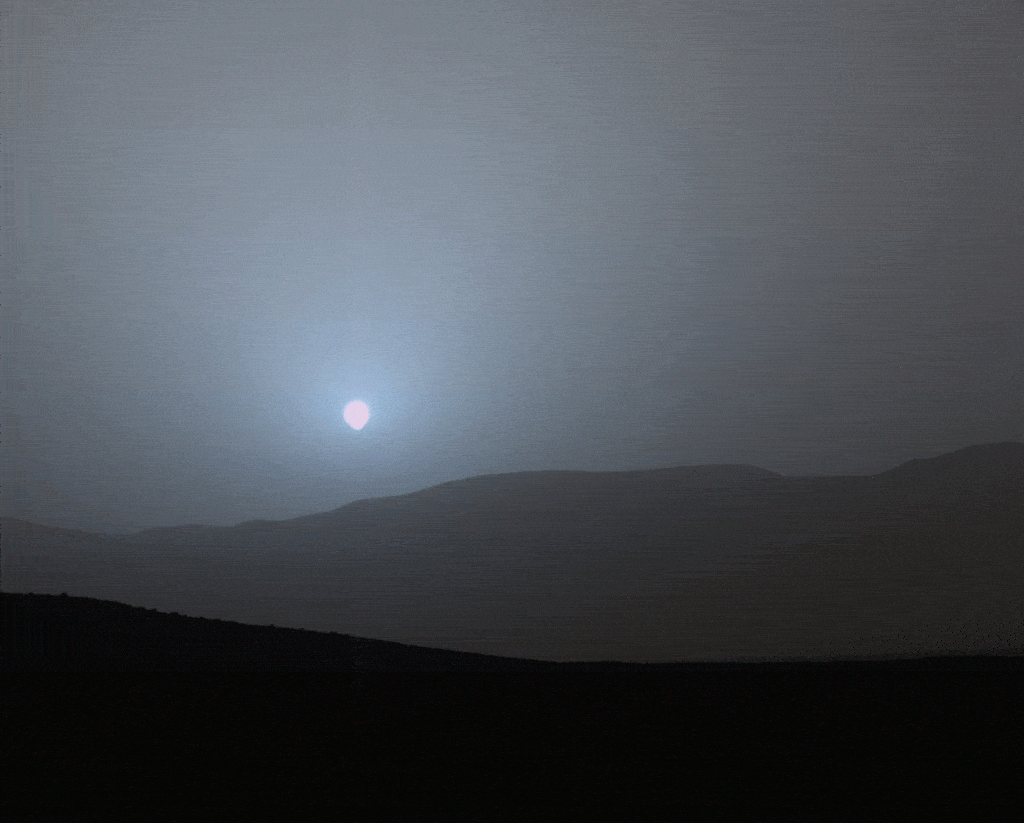That’s the sun setting over the rim of Gale Crater on Mars, as shot by the Curiosity Rover. Notice some differences? Well, first of all, the sun looks a lot smaller. Of course, it should look smaller considering Mars is farther away from the sun than Earth is. This way, the sun looks approximately two-thirds as big as from our own planet. Next, that’s a blue-tinted sunset, fading out in a pinkish tinge. In terms of colors, that’s more or less the exact opposite of what happens here on Earth where sunsets tend to fade from warm, ruddy colors like orange-red. This can be explained by the differences between airborne particles in the two atmospheres.
On Mars, there’s much more dust than on Earth, and most importantly it comes in finer grains. In fact, it’s just the right size to absorb blue light, while red gets scattered across the sky, which is what makes it pinkish. If you look directly towards the sun, though, you’ll notice it’s surrounded by a blue hue since the light coming from that direction lost its red wave lengths entirely. On Earth, a similar process unfolds but in reverse: blue gets scattered and red gets absorbed. The more dust or pollutants there are floating about, the moonlight or sunlight shifts more towards the darker red part of the spectrum.



